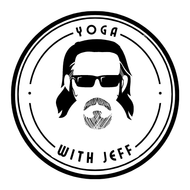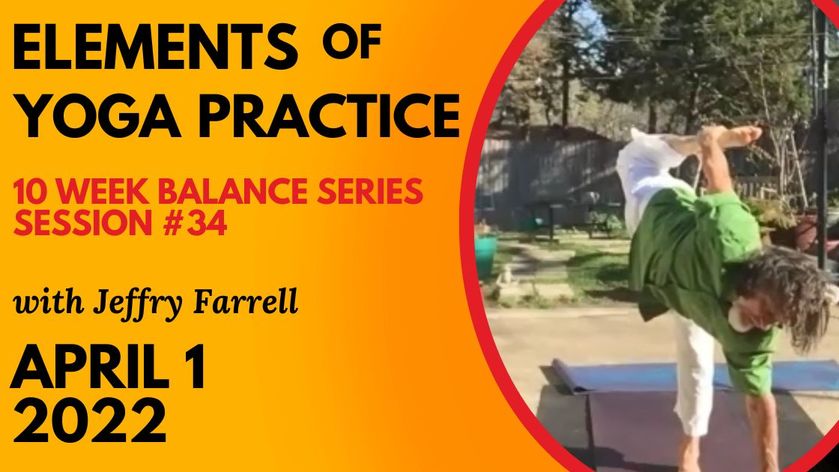It's really a video not an article. . . . And it is the captured video of one Salute sequence originating with one side.

Warm up your day knowing you are exactly where you should be. You cannot chase any faster and you must not allow yourself to “get beside yourself” with emotion. You are whole and sufficient. You can find stability, alignment, balance, strength and breath in any position. This wholeness we call SHTIRA. You are exactly where you should be. You can’t be more than what you are. To be where you are allows you to fully be yourself. And we humans can change. But we must begin from a stillness and its wholeness. Shtira.
From this wholeness we sent our intention. We call this SANKALPA. In sankalpa we de-cide. We cut away everything else. We fix attention on one thing. Slow down. On what can you count on as a worthy subject for your fixed attention? Your breath. Decide to focus on your breathing cycle. Subtle aspects arise within every breathed posture and transition.
Move. Carry shtira into posture with your breath. To perform this act of movement and attention we call SUKHA, an ease, a grace, the exact amount of energy for the task, an effortless effort.
With repetition time and ego, you discover pain, limitation, resistance which we call DUKHA.
Observe any pain as an honest teacher. Observe breath as a teacher.
Today we make an open 30 minute session with WISEGUYS in three planes of effortless effort, lymphatics, plus work for lumbar spine strength, stability, balance, pain liberation. This likely will involve floor work in supine bound angle pose. We will slow down.
To slow down is sometimes necessary to allow for a lively and quick pace! To observe the “flavor of practice” is to observe the natural rhythms that arise. Observe harmonies and the beautiful where it may arise in your day.
This is a video of the left side initiating movement in a Salute to the Sun sequence.
Breath is first. It activates stability and sensation, strength, balance, and an active but receptive mind. Then, move.
Congratulations! You are about to complete the first chapter and the first series of one minute videos.
There are several positions with inter-laced fingers. Do this one first and breathe nine deep breaths. If you cannot do this, nevermind. And accept the completion of the first chapter! You are prepared to go on to Chapter II which is the first sequence for Breath.
We will come back to Laced Fingers again in a subsequent chapter.
I will add specific series for laced fingers witih arm movement in future uploads. Every position has many variations. Every position begins with breath, stability, and wholeness. In every position we set our intention and move, guided by breath. The work is an effortless effort that confronts pain and learns.
This video completes the initial series of nine short videos to awaken the upper body.
IF YOU STARTED HERE GO BACK LIKE SHOOTS AND LADDERS TO THE FIRST VIDEO —
I. Standing A.) Arms, Shoulders, Neck 1.) Open/close the fist....
From a standing upright position, maintain stable and unmoving shoulders as best you can.
Isolate the head’s movement with a nod forward and back. Hinge the head forward and back. Inhale back, exhale forward. Make at least three reps of nodding “yes.”
Return to center. Turn the whole head right and then left. Turn the chin and forehead equally. Turn your eyes deeply back, too. First breath is to exhale over your shoulder. Make at least three reps of “no.”
Return to center. Tilt the head to one side. Pretend you could lift the ear up into the sky. Stay there and breathe. Feel the dilation in that side fo the neck. Feel the compression on the opposite side. Take three breaths on each side. Make three reps of “maybe.”
Return to center and make a circle with the top of your head. Turn the head three times to the right, then reverse three times. Every circle is a breath.
HOW TO USE THIS VIDEO SERIES:
Please watch the video then make the movement. Make at ...
If you have any questions about payments, text Donna at 214-663-3991.
~Group class rate if you have joined the Locals online group at the FREE level: $30. Click here to pay: https://buy.stripe.com/cNi28qemN5q0bDldWzf3a0j
~Group class rate for Locals supporters at the $5-$14/month level: $20
Click here to pay: https://buy.stripe.com/8wM16A10Rg249fW8wD
~Group class rate for Locals supporters at the $15-$59/month level: $15
Click here to pay: https://buy.stripe.com/cN25mQ7pf7vy2Ry6ow
~Group class rate for Locals supporters at $60 and above: FREE
I like this guy’s work online. He’s been around for a while and speaks so plainly about the body’s maps, functions, that you’re sure to like him, too.















